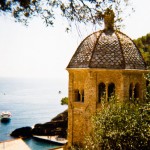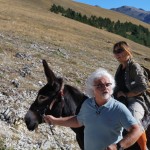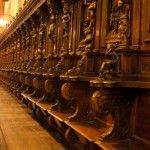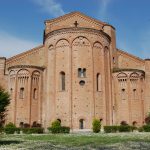Don't miss a visit, before or after having a swim in the sea
The Abbey of Montecassino
Horse trekking on the path of St Benedict
Slow Tour riding a horse, along the path of Saint Benedict that leads to the great Abbey of Montecassino, rising up above the Liri valley.
Beneath the walls of the abbey there is a magnificent and ancient farm, representing quite well the Benedictine Order, based on ora et labora: the monks not only had to pray, but to work as well, to produce wealth for the abbey and for everything that surrounded it.
⇒ Watch the full web serie Rieti & the holy valley
Thanks to Visit Lazio, Il Cammino di San Benedetto & MiBACT
Video full text: The Abbey of Montecassino
I’m riding a horse, along the path of Saint Benedict.
It can be done on horseback, by bicycle or a mountain bike.
But on horseback is fantastic!
Do you think Saint Benedict ever rode a horse? Yes, I think so.
Photo!
We’re on the path that leads to the great Abbey of Montecassino.
It was the place where work was organised and the lands managed.
It was also where civilisation and order were rebuilt following the decline of the Roman Empire.
All the work of Europe’s Saint.
Montecassino rises up above the Liri valley.
On a hill that since ancient times made it possible to control the surrounding territory.
A territory that in the past was marshland and is crossed by the Liri river.
Below Montecassino.
The hilly parts were inhabited by the Volsci.
They had already surrounded their cities and acropolises with imposing megalithic walls in pre-Roman times.
Montecassino too had those types of walls and we’re below one now.
Here they are, the walls of Montecassino,
Even prior to Saint Benedict Montecassino had already been the site for a temple to Apollo.
It was more than likely already a place of defence.
An extraordinary place that dominates the Liri Valley.
Basically it’s the only passing point there is towards Rome.
We’re continuing to make our way to the abbey.
Beneath the walls of the abbey there is a magnificent and ancient farm.
It gives us some idea of what this Order, based on ora et labora, must have been.
The monks not only had to pray, but to work as well.
To produce wealth for the abbey and for everything that surrounded it.
Benedict had to recover the affluence that had been lost with the fall of the Roman Empire.
He had to restore that culture, that was also productive.
So the monks here produced, as Karl Marx would have put it, surplus value.
We’re here!
In around the year 520 Saint Benedict began building this enormous abbey
that dominates all of this part of Italy and that was to become a beacon of civilisation.
An abbey that also had all this land, this agriculture and this economy.
Thank you to our horse friends!
I bid farewell to my trusty steed and set off to meet Father Luigi.
Below this word Pax, i.e. peace.
It encompasses the message of Saint Benedict in its entirety.
Beneath this monastery’s giant walls are the megalithic ones.
The construction already existed before Saint Benedict arrived in 529.
There were cults and pagan temples.
These walls, known as Cyclopean because they are enormous, date from the fourth and third century BC.
Father Luigi explains to me how the abbey is run.
How many monks are there here?
We’re only 12! But we manage!
Benedict decided upon and wrote a rule that is contained in a very weighty tome.
That’s a little deceiving, because in reality it is a small rule. ora et labora
But there’s another word to add to those two and that is et lege. There is also reading!
I discovered something about Saint Benedict that I didn’t know.
I discovered it reading (et lege, as the rule says!)
Benedict had a twin sister, Saint Scholastica.
She is buried alongside him, right here, beneath the Basilica’s altar.
That’s her: Saint Scholastica! With the book, because she too reads.
And the dove, because she rises up to heaven in the form of a dove.
The dove was the symbol of Isis, an ancient goddess.
On the other side is the statue of Saint Benedict,
that remained intact following the bombing of Montecassino.
The same thing occurred with the altar located in the place of the ancient pagan altar, where the bodies of the Saints lie.
An unexploded bomb was found there at the end of the bombing that totally destroyed the abbey.
A symbol of something magical and mysterious that, despite everything, protects this place.














